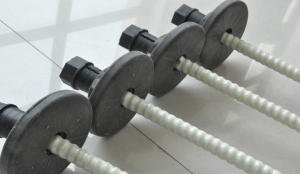Since the mechanical properties of FRP fiberglass rebar differ from those of steel, design engineers should consider recommendations made in published design and construction guides prior to using FRP fiberglass rebar in their structures.
Several important differences between steel and FRP fiberglass rebar should be considered prior to designing your concrete structures using fiberglass rebar:
- Direct substitution of FRP fiberglass rebar with steel rebar may not be possible in some cases
- A lower modulus of elasticity and shear strength may impact the number of reinforcing bars required
- FRP fiberglass rebar has a limited maximum sustained shear stress.
- Guaranteed design tensile strength of fiberglass rebar has to be de-rated in certain applications
- Some types of FRP fiberglass rebar are not suitable for certain pre-stressing or post-tensioning applications
- Unlike steel reinforcement, the creep failure of FRP reinforcing bars may occur at tensile stress levels considerably lower than their static failure stress. Thus, the creep strength of a particular FRP bar type plays a role in determining its allowable service stress level. FRP’S design codes reflect this characteristic of FRP and should be followed. See the report on Creep in this section to understand this characteristic (or contact us).
- FRP rebar is two to three times stronger (in tensile) than grade 40 steel. Reducing allowable stress levels for certain applications is generally off set by this strength difference.





























